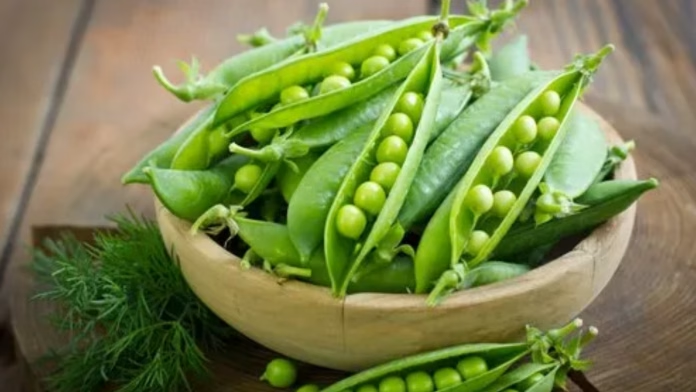Green peas, also known as garden peas, are a small, round vegetable that are a popular ingredient in many cuisines around the world. Not only are they delicious, but they also offer a range of health benefits.
First and foremost, green peas are an excellent source of dietary fiber, which is essential for maintaining a healthy digestive system. They also contain vitamins C and K, which are important for supporting a strong immune system and healthy blood clotting, respectively. Additionally, green peas are a good source of folate, which is essential for cell growth and development, making them particularly important for pregnant women.
In terms of taste, green peas have a sweet, fresh flavor that pairs well with a variety of other ingredients. They can be enjoyed on their own as a side dish, or used as a versatile ingredient in a variety of dishes, including soups, stews, salads, and even desserts.
Why is it essential for people above age of 40
As we age, the diversity and number of beneficial bacteria in our gut decrease, which can lead to various digestive issues. In recent years, research has shown that green peas can help improve gut health, particularly in elderly individuals over the age of 40.
Green peas are a rich source of flavonoids, plant-based compounds that have anti-inflammatory properties. Flavonoids have been shown to support the growth of beneficial gut bacteria, which can improve digestion, reduce inflammation, and improve overall gut health.
Additionally, green peas contain high levels of polyphenols, another type of plant-based compound that has been shown to improve gut health. Polyphenols have antioxidant properties, which can help reduce oxidative stress and inflammation in the gut. This can help alleviate symptoms of digestive disorders like irritable bowel syndrome (IBS) and inflammatory bowel disease (IBD).
Furthermore, as we age, our bodies become less efficient at absorbing minerals, which can lead to deficiencies. Green peas have been shown to improve the body’s ability to absorb nutrients from food, particularly minerals like calcium, magnesium, and zinc. By improving nutrient absorption, green peas can help prevent these deficiencies and support overall health and wellness.
How to incorporate peas in our daily diet?
Green peas are a versatile and nutritious ingredient that can be easily incorporated into a variety of Indian dishes. They can be added to soups, salads, stews, and casseroles, or simply eaten on their own as a healthy snack.
Additionally, green pea extract is available in supplement form, which can provide a concentrated dose of beneficial flavonoids and polyphenols.
Here are some ways to add green peas to your Indian diet:
- Curries: Green peas are a common ingredient in Indian curries. They can be added to vegetarian curries like matar paneer or mixed vegetable curry, or non-vegetarian curries like chicken or mutton curry.
- Rice dishes: Green peas can be added to rice dishes like pulao or biryani to add a pop of color and flavor. They can also be mixed with other vegetables like carrots or potatoes for added nutrition.
- Snacks: Green peas can be used to make a variety of snacks like samosas, cutlets, and tikkis. They can be mashed and mixed with spices and other ingredients, then fried or baked to make delicious and healthy snacks.
- Soups: Green peas can be used to make hearty and nutritious soups. They can be pureed with other vegetables like carrots, potatoes, or spinach, and flavored with herbs and spices for added flavor.
- Salads: Green peas can be added to salads for added nutrition and texture. They can be mixed with other vegetables like cucumber, tomato, and onion, and dressed with a tangy vinaigrette or yogurt dressing.





